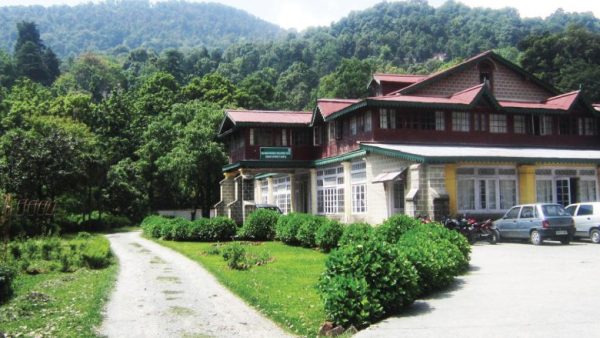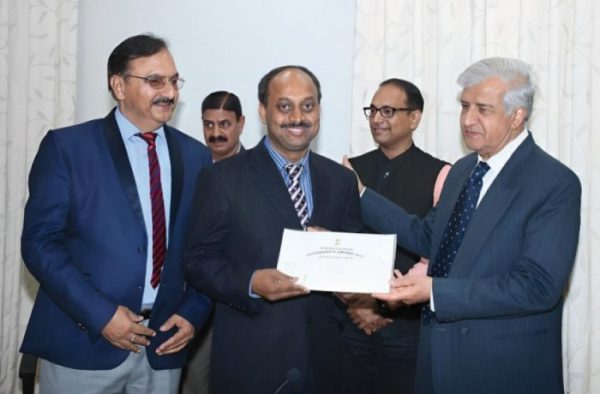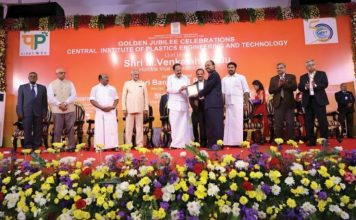
Delhi11:33 PM | 27th April 2024
By highlighting the importance of nanoscience and nanotechnology, this recognition can draw attention to the field itself.

Dr. Nandagopal Sahoo, a distinguished professor at Nainital’s Kumaun University, who has been recognized as one of the top scientists in the world by Stanford University, talks to Education Post’s Prabhav Anand about India’s challenges and opportunities in nanoscience, including his innovative method of converting plastic waste into reduced graphene oxide. He further highlights the vital role of technology transfer, drawing on his collaboration with Mumbai-based graphene manufacturing giant HeXorp Pvt. Ltd.

I appreciate the recognition from Stanford University, and am honored to be acknowledged as one of the top 2% of scientists in the world. Recognition by such a prestigious institution serves as a validation of my work in the field of nanoscience and nanotechnology. It reinforces my dedication to advancing knowledge in this area and motivates me to continue my research efforts. By highlighting the importance of nanoscience and nanotechnology, this recognition can draw attention to the field itself. It may also encourage more young scientists and researchers to pursue careers in nanoscience, thereby contributing to its growth and development.

Certainly, the field of nanoscience and nanotechnology in India, while experiencing growth, still faces several challenges and offers significant opportunities. One of the primary challenges is the limited awareness and understanding of nanoscience among the general public, students, and even some professionals. Nanoscience is inherently interdisciplinary, encompassing physics, chemistry, biology, and engineering, among others. Encouraging collaboration among researchers from diverse backgrounds can be challenging due to traditional disciplinary boundaries. Developing state-of-the-art research infrastructure for nanoscience requires substantial investments, and ensuring consistent funding for research projects and maintaining advanced facilities poses an ongoing challenge.

India boasts a wealth of talented scientists and engineers, providing a significant opportunity to leverage this talent for cutting-edge research and innovation in nanoscience and nanotechnology. Nanotechnology has broad applications in sectors such as healthcare, agriculture, electronics, and energy. India can harness nanotechnology to address local challenges in these areas. Collaborative partnerships with international research institutions can help India access advanced technologies and share knowledge, thereby accelerating progress in the field.

Yes, we innovated a technology capable of converting waste plastic into fuel, and wonder material reduced graphene oxide simultaneously for the first time. The waste recycling machine, SWAYAMBHU WRM 2021, was successfully installed at the PRSNanoscience and Nanotechnology Centre, Department of Chemistry, DSB Campus, Kumaun University, serving our proud nation. The machine yields approximately 15-20% raw reduced graphene oxide and 25-40% crude oil from waste plastic. This breakthrough not only addresses the pervasive problem of waste plastic but also presents an opportunity to generate significant revenue by producing fuel and reduced graphene oxide. This innovation is precisely what the nation needed for sustainable and environmentally friendly waste management, promoting the vision of a Clean and Green India.

Plastic waste is collected from the local Municipal Board and mechanically shredded into smaller pieces using a shredder unit to facilitate processing. The shredded plastic waste is then mixed with a catalyst in a catalyst mixing chamber, which is a crucial component for the pyrolysis process. Next, the catalyst-mixed plastic waste undergoes primary pyrolysis in a specialized unit, where it is heated to high temperatures in the absence of oxygen. During primary pyrolysis, the plastic waste breaks down into its constituent hydrocarbons and other byproducts. The resulting material is graphitized, containing carbon atoms. The graphitized material obtained from primary pyrolysis is subsequently processed in a secondary pyrolysis unit, where further steps, likely involving additional heating and refinement, are carried out to obtain the final reduced graphene oxide material.
By converting plastic waste into valuable reduced graphene oxide, this approach helps reduce the volume of plastic waste that would otherwise end up in landfills or oceans, addressing the plastic pollution problem. Reduced graphene oxide has numerous applications, including in energy storage (such as supercapacitors and batteries), electronics, composites, and more reduced graphene oxide. Utilizing reduced graphene oxide derived from plastic waste can lead to the development of sustainable and environmentally friendly products.
The key and most innovative feature of this work is the massscale production of high-quality reduced graphene oxide nanosheets from waste plastics, waste tyres (converting waste to wealth), and plant leaves (renewable resources) at a cost substantially lower than similar products available in the global markets.

Technology Transfer is a vital aspect of your work, as evidenced by your collaboration with HeXorp for reduced graphene oxide synthesis from waste plastics. Can you elaborate on the importance of technology transfer in bridging the gap between academia and industry, and its potential to drive innovation?
Technology transfer is a symbiotic relationship that benefits both academia and industry. It facilitates the transformation of research discoveries into practical applications, drives innovation, accelerates the development of new technologies, and contributes to economic growth and sustainability. The collaboration with HeXorp for reduced graphene oxide synthesis from waste plastics exemplifies the potential of technology transfer to address pressing environmental challenges and create valuable solutions for society. Several industries are highly interested in commercializing our technology, and ongoing discussions are in progress.

I am delighted that I am one of the first Indians to receive this fellowship. International experiences, such as the Lee Kuan Yew Fellowship in Singapore, have played a pivotal role in shaping my research perspective. They have broadened my horizons, enriched my academic journey, and reinforced the significance of collaboration, innovation, and global awareness in addressing complex challenges. These experiences have not only informed my research but have also contributed to a more holistic and globally relevant approach to addressing critical issues in environmental sustainability and technology development.

My Ph.D. research in Materials Science at IIT Kharagpur was indeed a multidisciplinary endeavor, and collaborating with experts from various fields greatly enriched my research. Here are some examples of how interdisciplinary collaborations benefited my research: Collaboration with physicists allowed me to delve deeper into the fundamental properties of materials at the nanoscale. I gained insights into quantum mechanics and electronic properties that were crucial for understanding and characterizing nanomaterials.

Working with chemists was instrumental in developing novel synthesis methods for nanomaterials. Their expertise in chemical reactions and materials synthesis techniques helped me create customized nanomaterials with specific properties for my research.
In some aspects of my research, particularly when exploring applications of nanomaterials in biotechnology and medicine, collaborations with biologists were invaluable. They provided insights into the biocompatibility and safety aspects of the materials, which is critical for applications like drug delivery and bioimaging.
Collaborating with engineers was essential when I was working on the integration of nanomaterials into practical devices. Their expertise in device fabrication and electronics played a pivotal role in translating laboratoryscale materials into real-world applications.

s essential to stay current with the latest literature and research findings to remain at the forefront of developments in nanoscience and nanotechnology. Here are some essential sources to consider: Nature Nanotechnology, Nano Energy, Journal of Energy Storage, ACS Nano, Nano Letters, Advanced Materials, Nano Today, and more. Additionally, conferences and symposia in nanoscience and nanotechnology offer excellent opportunities to network, learn about the latest research and access resources. Another valuable suggestion for students is to explore the websites of renowned institutes worldwide, including those in India, where you can find the latest updates on research. Continuous improvement of your research skills is crucial in this competitive world to thrive in the field.
Copyright© educationpost.in 2024 All Rights Reserved.
